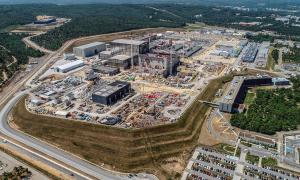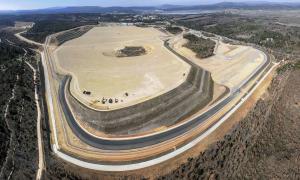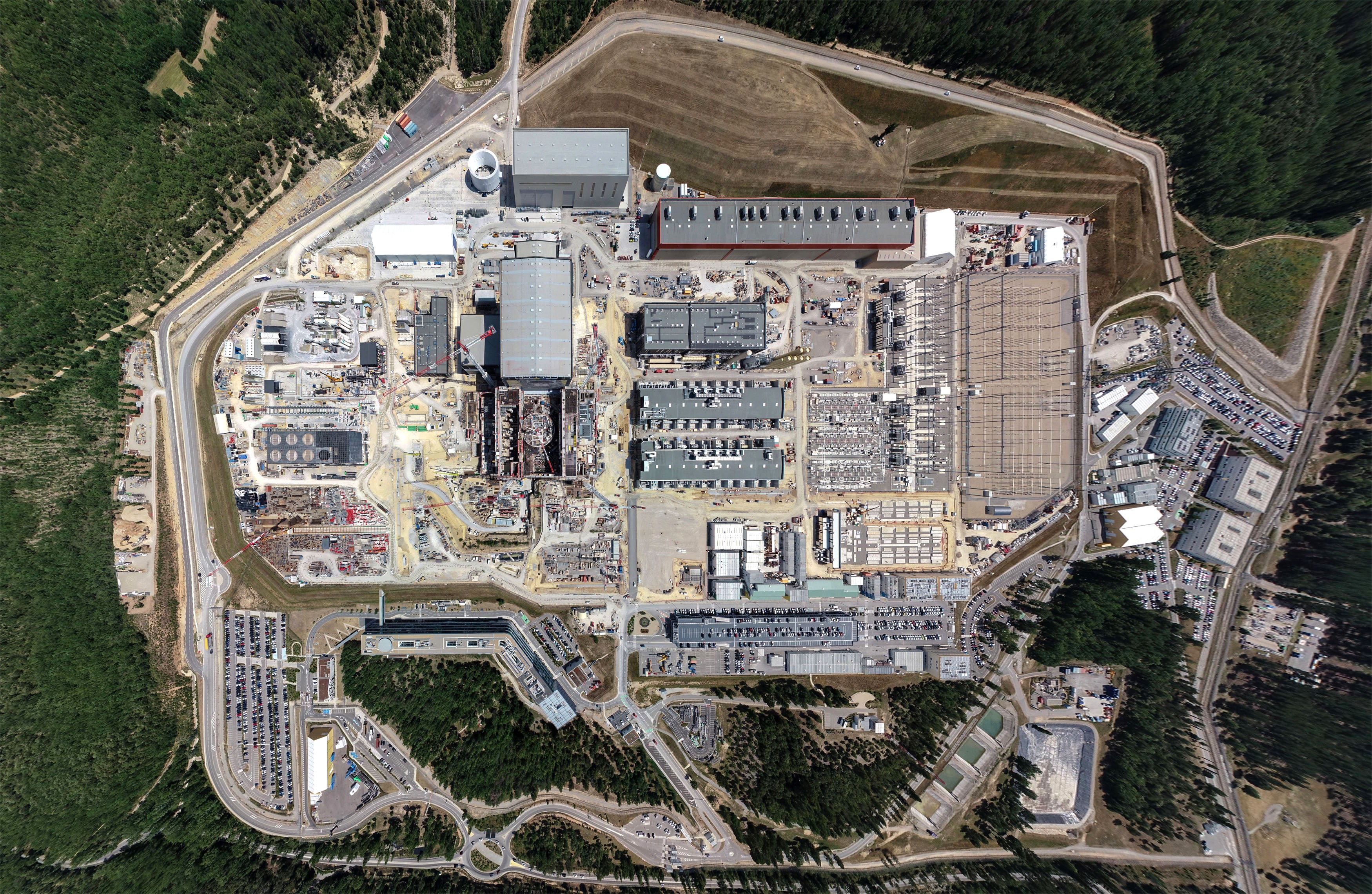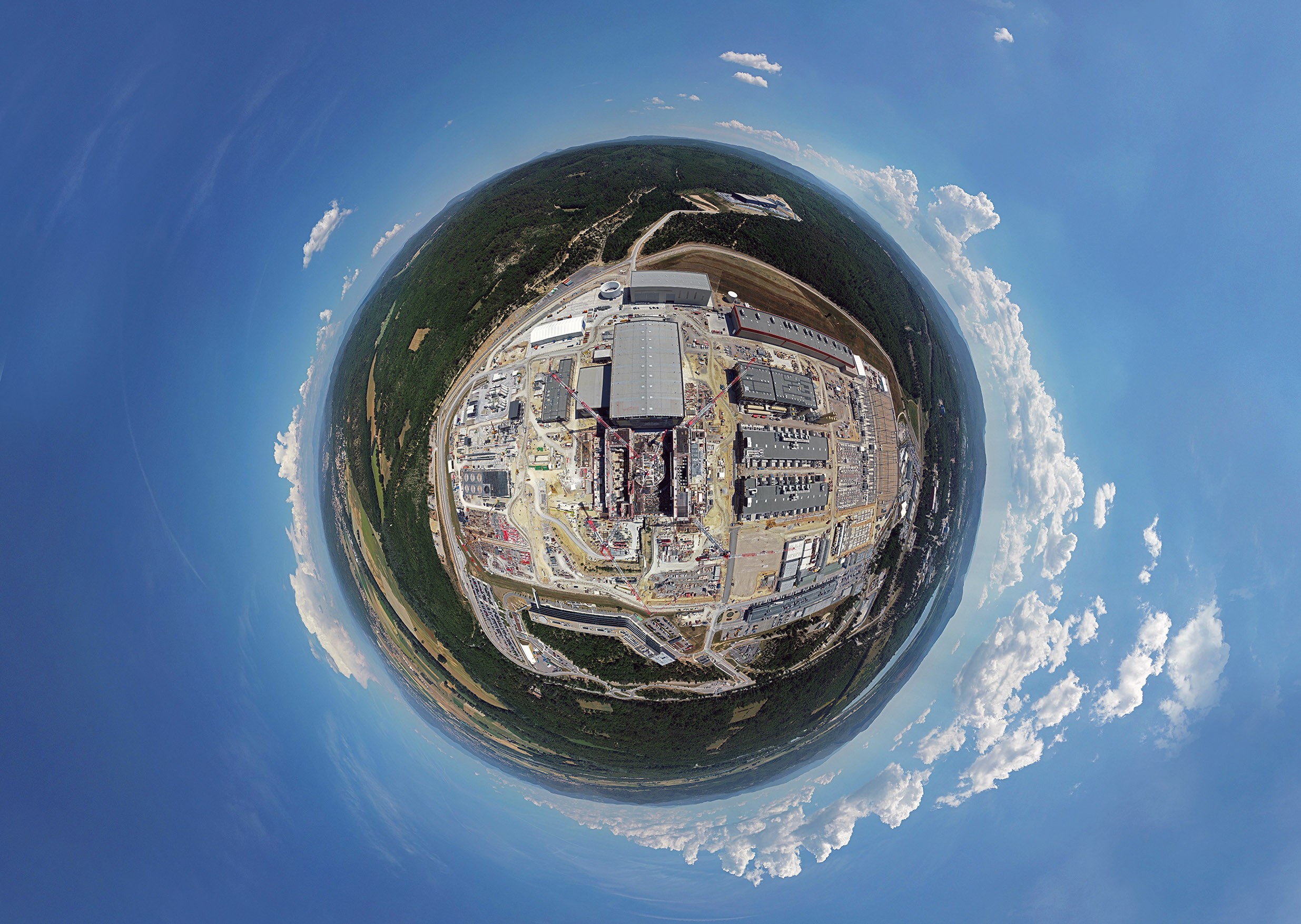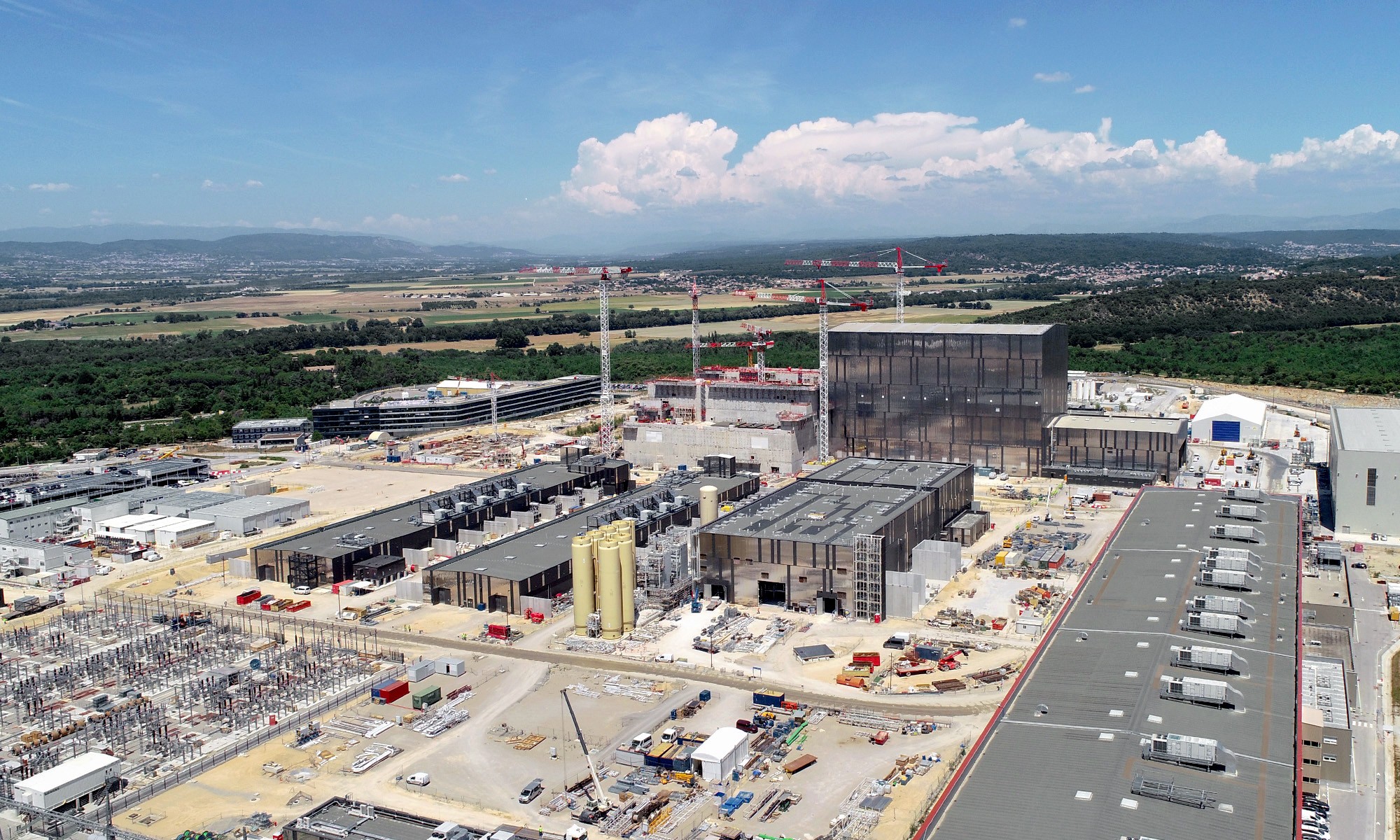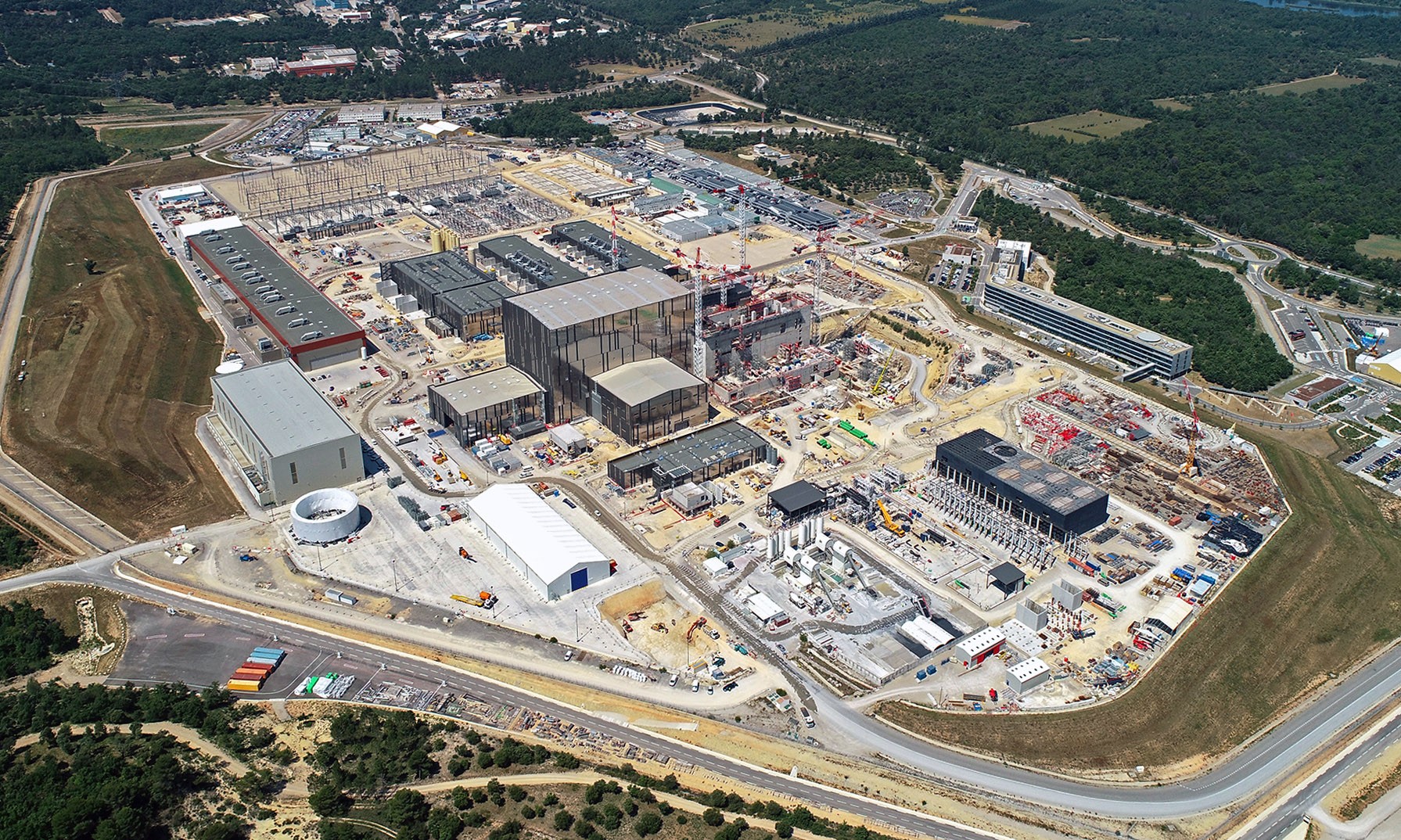It may be hard to believe, but this is what the 42-hectare ITER platform looked like in the early months of 2010, just before being transferred from Agence Iter France to the European Domestic Agency, responsible for construction. A vast, featureless, moon-like expanse that—being located in Provence—some described as the largest pétanque court ever created.
One by one, the now-familiar buildings and structures have sprung from the earth: nine years into construction civil works are 73 percent complete, concrete has reached its final level in the Tokamak Building, and a massive machine component—the cryostat lower cylinder—is visible, carefully encased in its protective cocoon, waiting to be installed in the Assembly Pit.

